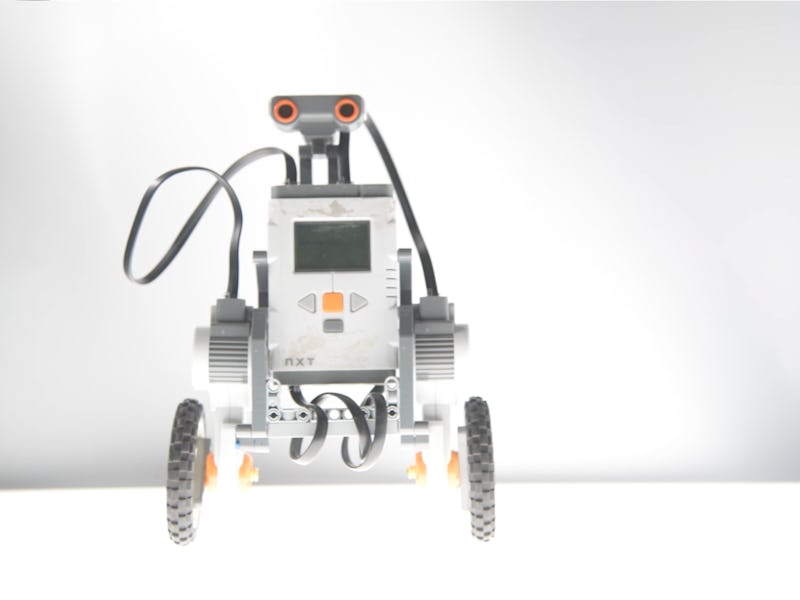A small tweak to walking robots could prove a key human psychology theory
A psychological theory is being put to the test.

Robots may be able to walk smoother than ever, with the use of an existing psychological theory about how humans react to the world.
Researchers at the University of Manchester have explored the use of "perceptual control theory" in a self-balancing robot. Where current methods like proportional control and LQR keep outputs within certain limits, this new model flips the question around and aims to keep outputs within desired boundaries. The team's testing suggested that the robot moves more accurately and efficiently than its predecessors.
The findings were published Thursday in the Journal of Intelligent and Robotic Systems.
"Although this is early work, it is tantalizing to see how a scientific theory used to help people with mental health problems might actually help engineers to improve their designs of artificially intelligent devices," Warren Mansell, an author on the paper and reader in clinical psychology at the University of Manchester, said in a statement. "Robots are yet to match the abilities of those in science fiction hits like Star Wars and Blade Runner and none have mastered walking on two feet. But the use of the theory could really enable the transformation of robots into more lifelike machines."
The theory was outlined by William T. Powers in the 1998 book Making Sense of Behavior. It suggests that humans and other organisms perceive the world through their senses, and they change their behavior to bring their perceptions to within acceptable boundaries. Under this theory, an office worker will ignore the temperature of a room until they feel uncomfortable, at which point they will put on a sweater or adjust the thermostat.
When applied to the team's robot, a Lego Mindstorms Two-wheeled Balancing Robot, the results were impressive. The robot with the new method was able to withstand disturbances greater than six inches, where the other two systems struggled. It was able to move to new locations with greater effectiveness, and video footage shows it moves smoother.
This experiment only focused on its application in a two-wheeled machine, which measures its surroundings 100 times per second to power the algorithm. However, the researchers claim it could be used with other systems with little changes.
"The software is ready to go and is easily adaptable to different hardware, but we’ve not pursued this yet," Mansell tells Inverse.
Perhaps most intriguingly, the research may also lend greater weight to perceptual control theory as a psychological theory. If the team can apply this theory to a humanoid robot with two legs with success, it would strengthen this argument even more. The paper's conclusion reads:
The success of these systems would greatly strengthen the argument that perceptual control theory provides an accurate explanation of behaviour in living organisms.
Humanoid robots have made international headlines with their uncannily human-like behavior. Boston Dynamics' two-legged bots have been seen stacking boxes, hauling a cargo truck and doing a sweet backflip. But with this new breakthrough in perceptual control theory, researchers may be able to enhance these capabilities and reach more uncanny representations than ever before.
"This research is a peek at a radical new way of understanding how to build robotics systems, that are dynamic and adaptive despite the chaotic, unpredictable nature of the real world," computer technologist Rupert Young said in a statement. "Based upon an elegant and natural approach, this paradigm holds the promise of developing far more sophisticated, autonomous robots"
Abstract: Perceptual Control Theory (PCT) theorizes that a creature’s behaviour is varied so that their perception can reach and maintain certain fixed limits, despite external disturbances. The distinguishing characteristic of PCT is that the controlled variables are the inputs (perceptions, as opposed to the system outputs). This paper presents the first direct comparison of a PCT controller for a mobile robot (a two-wheeled ‘inverted pendulum’ balancing robot) with a classical control method, LQR. Simulations and experimental validation results show that the performance of the PCT controller is comparable to the LQR controller and better at disturbance rejection.